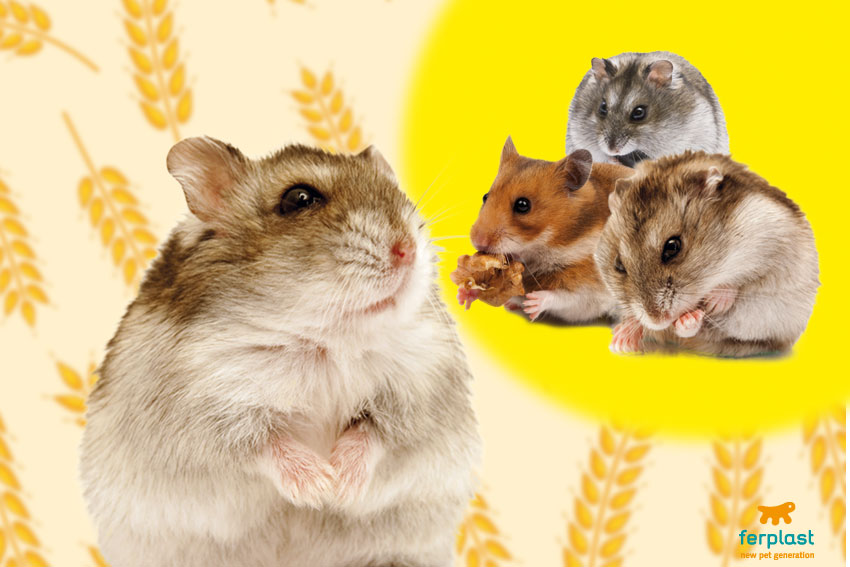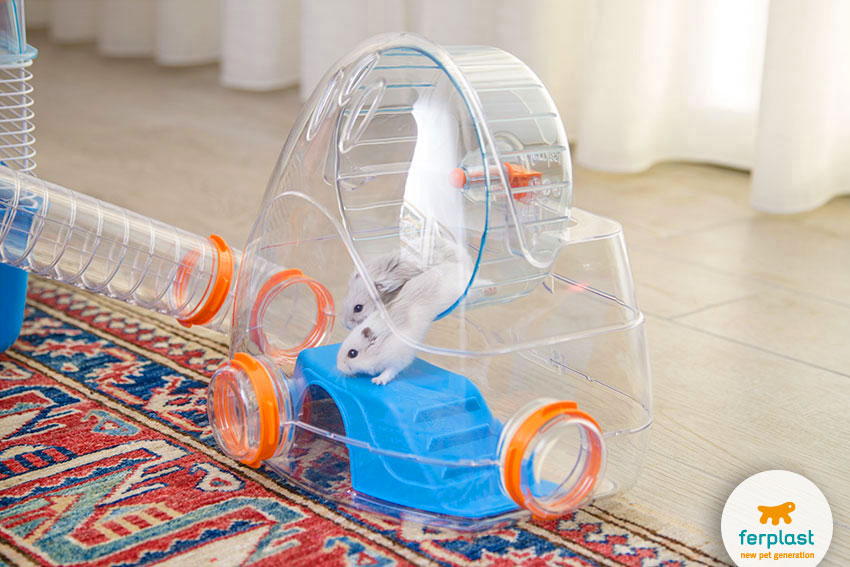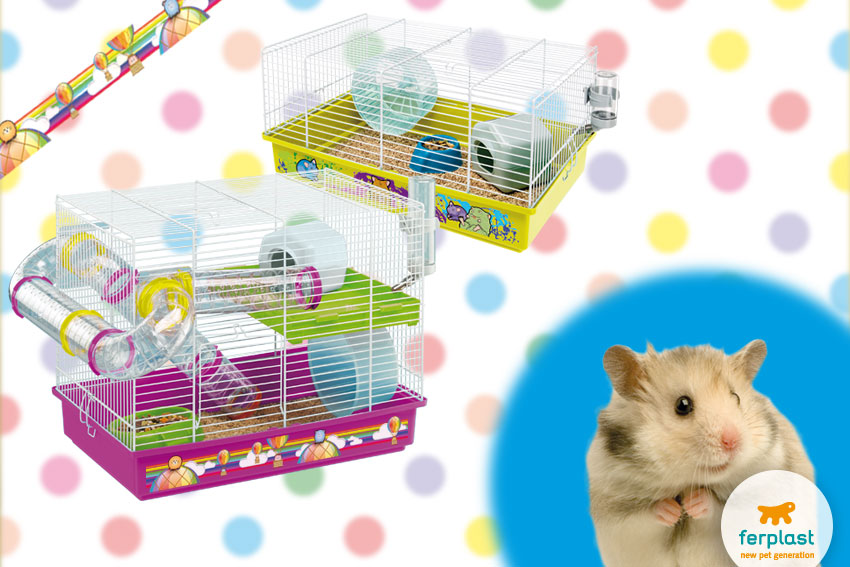There are plenty of hamster species in the wild, but only a few species are bred to live with us in our homes. Let’s find out about their characteristics and what sort of needs they have so that we can discover which one will best suit our needs.
THE MOST COMMON HAMSTER SPECIES
- Golden Hamster. This type of hamster is the most common of all. Also known as the Syrian Hamster, it comes from semi-arid deserts of the Middle East. They are the largest hamsters and are sometimes as long as 13-15 cm. Generally speaking they have short hair, although there is a long-haired variety. The golden-brown colour from which they originally got their name is not the only colour they can have. In fact, they can be of various colours, white or black, solid or patchy. The Golden Hamster can live 2 to 3 years and the ideal temperature for them is about 20°C.
- Russian Hamster. The Russian Hamster, as its name suggests, comes from the cold zones of northern Asia, like Russia, Siberia and Mongolia, and its fur is nice and thick. Although it is usually grey or brown in colour with a light tummy and black stripe on its back, they actually come in many colours, including white. This species is not as large as the Golden Hamster and adults do not exceed 10 cm in length, but they are very resistant to changes in temperature and have lively characters. Their life expectancy is about 2 years.
- Siberian Hamster. Often mistaken for a Russian Hamster, the Siberian version comes from the steppes of northern Asia like Kazakistan, Siberia and Mongolia. One of its distinguishing features is that it turns white in winter: perhaps to use winter snow as camouflage, when the days grow shorter and temperatures dip, its fur becomes white and so it is also known as the Winter White Hamster. They look like Russian Hamsters and their life expectancy is similar.
- Roborovski Hamster. This hamster species was named after the Russian explorer who discovered it for the first time in the desert areas of Siberia, Mongolia and northern China. They are the smallest of the domesticated hamsters (not more than 5 cm long) and are very lively and fast moving. Their fur is brown with a darker base, while the tummy and the area above the eyes are white. They usually live for more than 3 years.
RAISING A HAMSTER: TIPS AND WARNINGS ![]()
![]()
Hamsters are quite easy to keep, all you really need are the right accoutrements and some knowledge of the basic rules. A healthy diet, for example, is fundamental to all animals, including hamsters. Being granivours, they mostly eat seeds, but in captivity their diet should not include overly oily or fatty foods (like sunflower seeds), which should be included in their diet with parsimony.
Hamster community life is not always sunshine and roses. On the contrary. Golden Hamsters tend to be rather argumentative, they like to fight. They are solitary creatures and, if they are kept in too close quarters, they get aggressive, sometimes with unhappy results. And they aren’t really made to live in pairs as a couple either, the female often ends up killing the male! So if you want baby hamsters, them bring the couple together just long enough to let nature take its course, in the evening perhaps, and somewhere that is not her cage as she may feel her territory is being invaded and become aggressive.
Other hamster species are more sociable, they enjoy company, but it’s always a good idea to stay alert. If you do have a number of hamsters, it’s best to have a nice big cage with plenty of little houses in it so that each can have its own space to live in and escape when attacked.
If you have decided to bring one home with you, Ferplast can provide you with a full range of cage sizes. If you want to give your child a hamster, the Décor line offers plenty of cheerfully coloured cages designed for males and females. Just remember, hamsters are not toys, they are living animals with specific needs and characteristics, and it’s up to you to teach your child to respect it and take care of it in the proper way.



